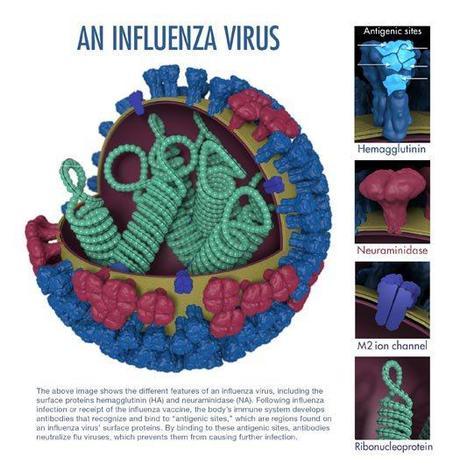The CDC came out with a press release last week which expressed the fear that the US was destined to face a severe season of influenza in the upcoming few months. It is still early on in the influenza season and the disease activity is low in the US at this point of time, but the CDC has stepped in, stating its apprehension that:
Increasing the risk of a severe flu season is the finding that roughly half of the H3N2 viruses analyzed are drift variants: viruses with antigenic or genetic changes that make them different from that season’s vaccine virus. This means the vaccine’s ability to protect against those viruses may be reduced, although vaccinated people may have a milder illness if they do become infected. During the 2007-2008 flu season, the predominant H3N2 virus was a drift variant yet the vaccine had an overall efficacy of 37 percent and 42 percent against H3N2 viruses.
Thus, it is in line to call for early vaccinations in those that have not yet had the shots for this season. However, I have some concerns with the way the press release opens up:
Early data suggests that the current 2014-2015 flu season could be severe. The Centers for Disease Control and Prevention (CDC) urges immediate vaccination for anyone still unvaccinated this season and recommends prompt treatment with antiviral drugs for people at high risk of complications who develop flu. [bold and italics mine]
The guidelines for institution of antiviral therapy in people likely to develop complications from the viral infection are clear. The message that the disease is best treated when antivirals are started within 48 hours of the onset of symptoms is also well known. However, as a healthcare provider who has faced his fair share of challenge in curtailing patient-induced demands of unwarranted drugs, I believe this statement could be a double edged sword. I wonder whether this message of starting antivirals early would get precedence and the part that states it is for “people at high risk of complications” would get lost in the noise. This is a very real threat and I wonder if it was warranted to make this statement so early on in the season. This is especially important because caregivers are more than aware (or at least they should be) of the indications of starting antivirals in patients suspected to be suffering from influenza.
There is enough reason to believe that simply because of the epidemiological nature of the circulating viruses this year there would be more cases of influenza, and more severe disease at that. The seasons in which strains like H3N2 predominate, the likelihood that there would be more cases and a higher case fatality rate is well established. This year being one such year, it is likely that there would be more cases despite the stress on vaccinations. However, those who have the vaccine are morel likely to be protected against the disease and even if they contract the infection, are likely to have a milder form of the disease.

Influenza Virus (CDC)
All said and done, this is the beginning of the flu year: and it would be an interesting epidemiological exercise to follow the season. A similar sentiment was expressed on the PROMed Mailing list discussing this issue:
Seasonal flu vaccines have rarely been perfect matches and Dr Frieden’s statements seem unnecessarily alarmist. Current methodology does not enable seasonal influenza vaccines to be modified and produced in quantity during the course of an outbreak. Nor is it certain at this stage that H3N2 virus will be the predominant influenza virus causing disease in the 2014-15 winter epidemic which has barely begun in North America, and may take a different course elsewhere.
If correctly reported, the recommendation for early and indiscriminate use of anti-neuraminidase drugs seems likely to result in the evolution of drug resistant variants.
